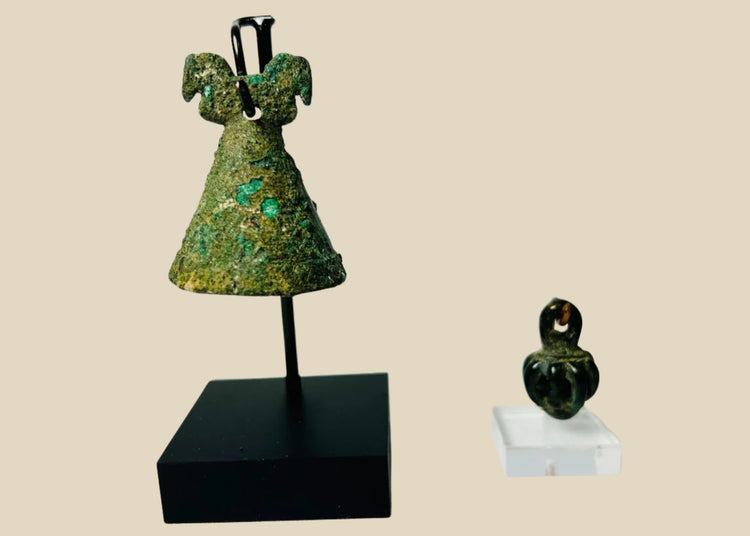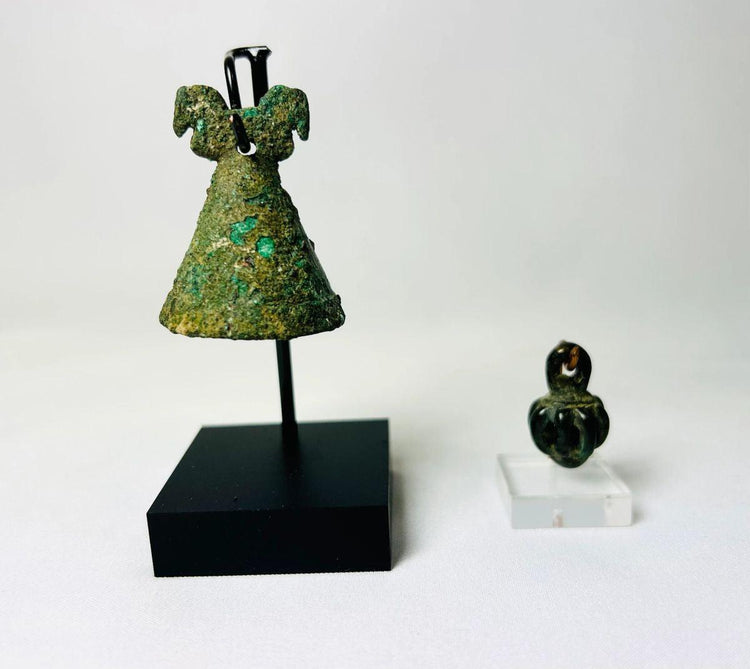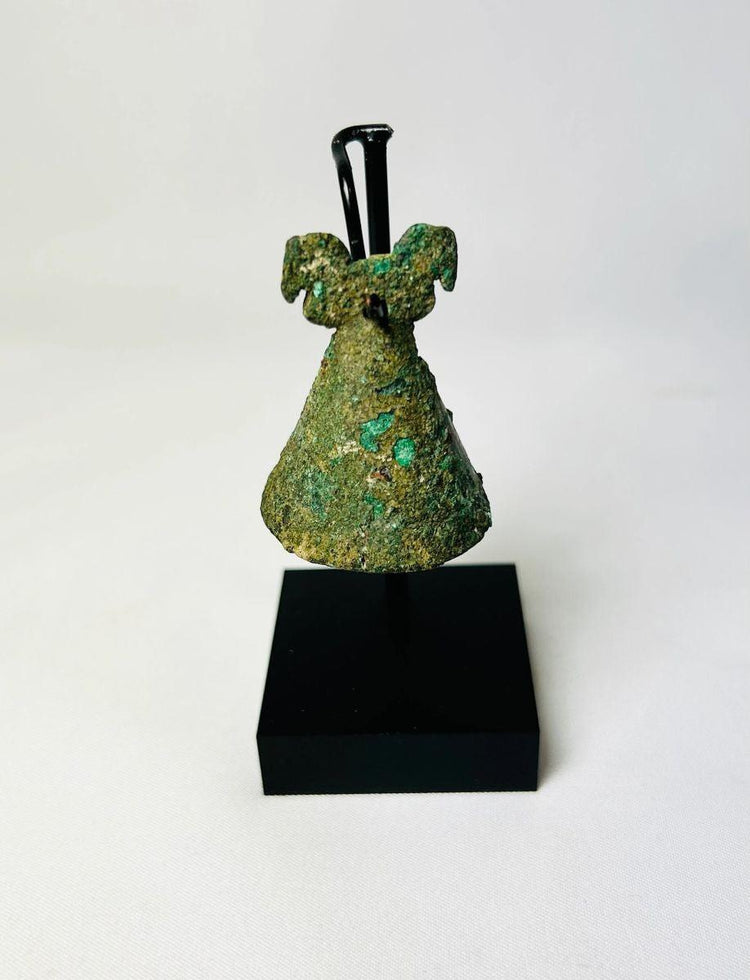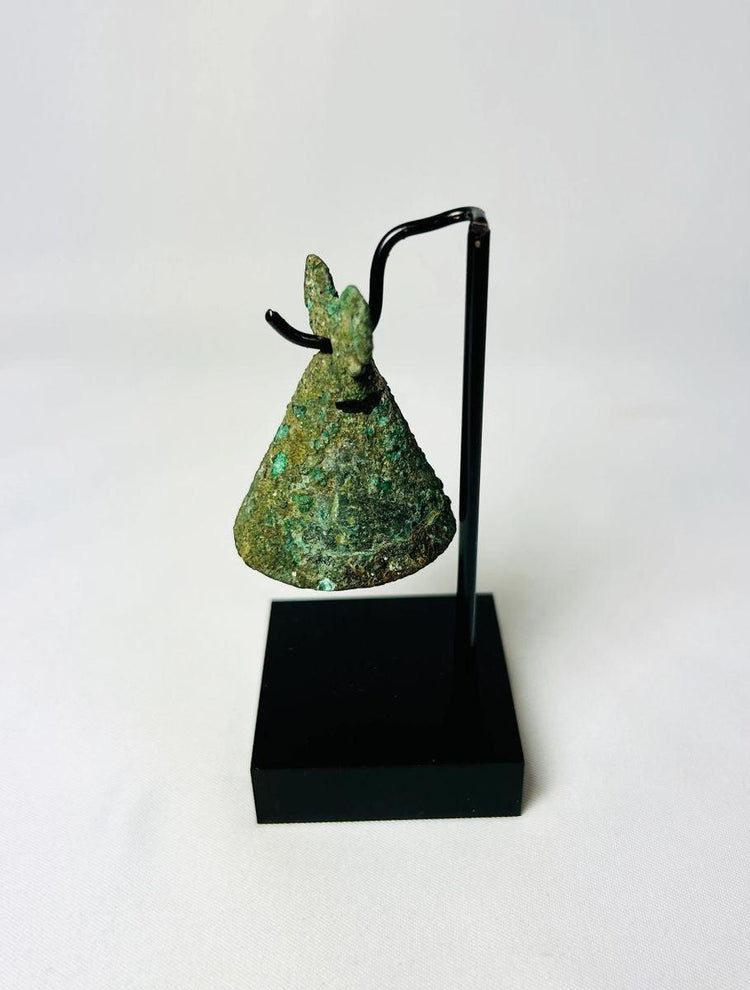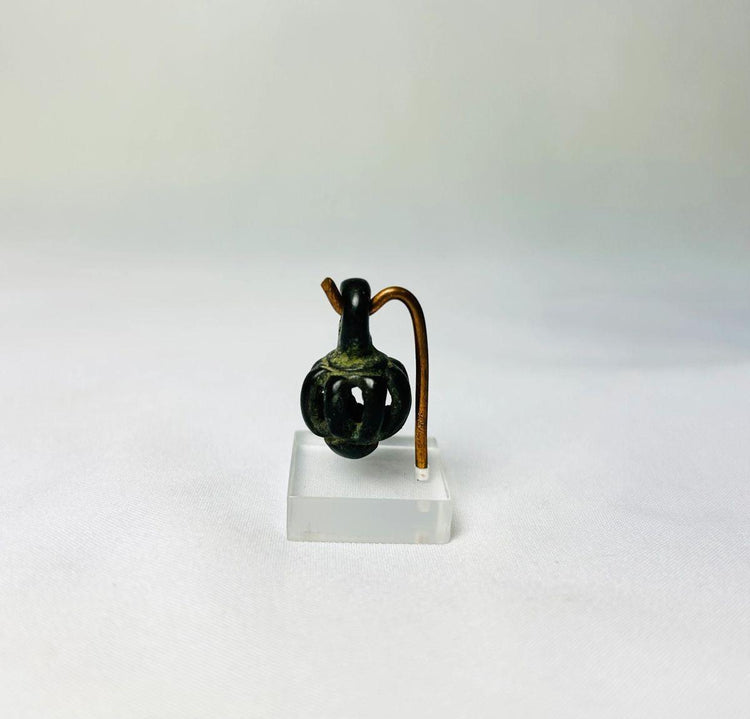Luristan Bronze Pendant Bells | 10th - 7th Century BC
Description
More
Less
Historical Context & Origin
Region: Luristan (modern-day Lorestan Province, Iran)
Material: Cast bronze/iron alloy
Period: 1st Millennium BCE
Description
This ancient Luristan pendant bell features an openwork globe design formed by seven undecorated bars, creating a simple yet refined structure. Topped with a slightly irregular suspension loop, the bell was designed to house rattle pellets that would have produced a distinctive sound when shaken. Its craftsmanship reflects the artistic and functional qualities of Iron Age Luristan metalwork.
Features
- Openwork globe formed by seven bars
- Suspension loop for attachment to chain, garment, or harness
- Designed to contain internal rattle pellets for sound
- Mounted on a custom stand for modern display
Cultural Significance
Bells of this type are strongly associated with Iron Age Luristan, a culture renowned for its masterful metalwork. Larger bells were often used as horse trappings, while smaller bells like this likely served as personal ornaments or elements of ceremonial attire. Their sound was both decorative and symbolic, believed to provide protection or mark ritual occasions. This pendant bell embodies the intersection of adornment, utility, and ritual in ancient Iranian culture.
Condition
Excellent excavated condition with surface patina consistent with age. The openwork bars remain intact, and the suspension loop shows natural irregularity from hand-casting. Mounted for stability and presentation.
Dimensions
Height: 3.5 in
Width: 1.5 in
Depth: 1.5 in
Age
Circa 1000–600 BCE
Learn More
Expand your understanding of Iron Age Luristan craftsmanship and the cultural context behind these remarkable bronze works: Luristan Bronzes – National Museum of Ireland
Explore more artifacts from the ancient cultures of the Middle East: Middle Eastern Antiquities & Ancient Art – Relic And Rarity
Description
Historical Context & Origin
Region: Luristan (modern-day Lorestan Province, Iran)
Material: Cast bronze/iron alloy
Period: 1st Millennium BCE
Description
This ancient Luristan pendant bell features an openwork globe design formed by seven undecorated bars, creating a simple yet refined structure. Topped with a slightly irregular suspension loop, the bell was designed to house rattle pellets that would have produced a distinctive sound when shaken. Its craftsmanship reflects the artistic and functional qualities of Iron Age Luristan metalwork.
Features
- Openwork globe formed by seven bars
- Suspension loop for attachment to chain, garment, or harness
- Designed to contain internal rattle pellets for sound
- Mounted on a custom stand for modern display
Cultural Significance
Bells of this type are strongly associated with Iron Age Luristan, a culture renowned for its masterful metalwork. Larger bells were often used as horse trappings, while smaller bells like this likely served as personal ornaments or elements of ceremonial attire. Their sound was both decorative and symbolic, believed to provide protection or mark ritual occasions. This pendant bell embodies the intersection of adornment, utility, and ritual in ancient Iranian culture.
Condition
Excellent excavated condition with surface patina consistent with age. The openwork bars remain intact, and the suspension loop shows natural irregularity from hand-casting. Mounted for stability and presentation.
Dimensions
Height: 3.5 in
Width: 1.5 in
Depth: 1.5 in
Age
Circa 1000–600 BCE
Learn More
Expand your understanding of Iron Age Luristan craftsmanship and the cultural context behind these remarkable bronze works: Luristan Bronzes – National Museum of Ireland
Explore more artifacts from the ancient cultures of the Middle East: Middle Eastern Antiquities & Ancient Art – Relic And Rarity
You May Also Like
















